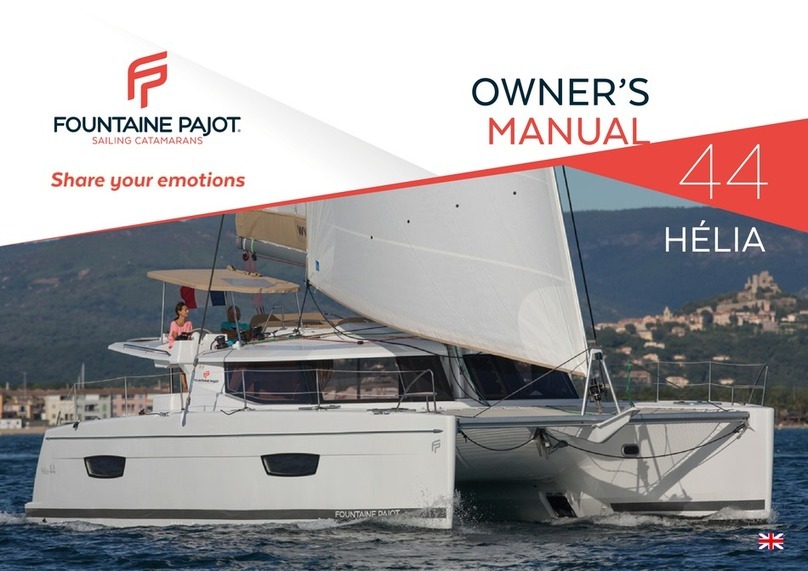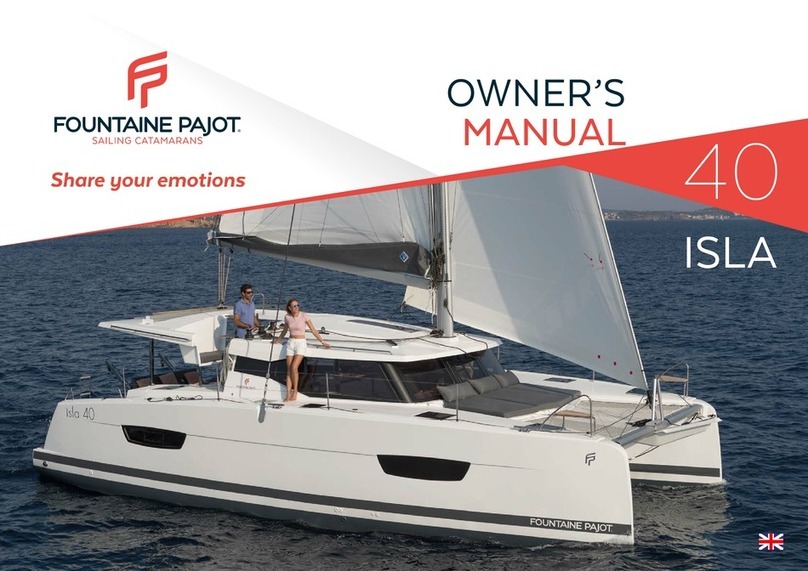Fountaine Pajot Helia 44 2013 Maple Cookie User manual
Other Fountaine Pajot Boat manuals

Fountaine Pajot
Fountaine Pajot SUMMERLAND 40 LC User manual

Fountaine Pajot
Fountaine Pajot Saba 50 User manual

Fountaine Pajot
Fountaine Pajot Helia 44 2019 User manual

Fountaine Pajot
Fountaine Pajot ATHENA 38 User manual

Fountaine Pajot
Fountaine Pajot ELBA 45 User manual

Fountaine Pajot
Fountaine Pajot Lucia 40 User manual

Fountaine Pajot
Fountaine Pajot ISLA 40 User manual
Popular Boat manuals by other brands

Jeanneau
Jeanneau SUN ODYSSEY 41 DS owner's manual

Meridian
Meridian 490 Pilothouse owner's manual

Advanced Elements
Advanced Elements AdvancedFrame Expedition AE1009 owner's manual

Robo Marine Indonesia
Robo Marine Indonesia GEOMAR user manual

Swallow Boats
Swallow Boats BayRaider owner's manual

X SHORE
X SHORE EELEX 8000 owner's manual





















